In the realm of fitness and exercise, achieving optimal performance and progress isn’t just about pushing your limits during workouts; it’s also about allowing your body the time it needs to rest, recover, and recharge. Incorporating active recovery and rest days into your fitness regimen is essential for preventing burnout, reducing the risk of injury, and promoting long-term health and well-being. In this guide, we’ll explore the importance of active recovery and rest days, along with practical strategies to make the most of these essential components of your fitness journey.
Understanding Active Recovery and Rest Days:
Active recovery involves engaging in low-intensity activities or gentle exercises that promote blood flow, muscle relaxation, and joint mobility without causing additional stress or fatigue on the body. On the other hand, rest days are designated periods of time when you intentionally refrain from structured exercise, allowing your muscles, connective tissues, and nervous system to recover and repair from the physical demands of training.
Active recovery and rest days play a crucial role in the overall fitness equation by providing your body with the time it needs to adapt to training stimuli, repair muscle tissue, replenish energy stores, and reduce inflammation. These periods of rest allow your central nervous system to recover from stress, improve sleep quality, and prevent overtraining, which can lead to performance plateaus and increased susceptibility to injuries.
Strategies for Active Recovery:
Incorporating active recovery into your routine doesn’t mean you have to spend hours at the gym. Instead, focus on light activities that promote relaxation and mobility, such as walking, swimming, cycling, yoga, or foam rolling. These activities help increase blood flow to muscles, promote the clearance of metabolic waste products, and alleviate muscle soreness, allowing you to recover more quickly and effectively between workouts.
Making the Most of Rest Days:
Rest days are your body’s opportunity to recharge and rebuild, so it’s essential to prioritize restorative activities that support recovery. Focus on activities that promote relaxation and stress reduction, such as meditation, deep breathing exercises, gentle stretching, or leisurely hobbies. Additionally, ensure you’re getting adequate sleep, staying hydrated, and fueling your body with nutritious foods to support the recovery process.
Balancing Training and Recovery:
Finding the right balance between training and recovery is key to optimizing your fitness progress and preventing burnout. Listen to your body’s signals and adjust your training intensity and volume accordingly. Incorporate regular rest days into your training schedule and don’t be afraid to take additional rest days when needed, especially if you’re feeling fatigued or experiencing signs of overtraining.
In a nutshell, active recovery and rest days are essential components of a well-rounded fitness program. By incorporating these periods of rest and rejuvenation into your routine, you can enhance your overall performance, reduce the risk of injury, and promote long-term health and well-being. Remember to prioritize self-care, listen to your body, and find the balance that works best for you to achieve your fitness goals while honoring your body’s need for rest and recovery.



































